Nigella Lawson: Five dishes every home cook should master
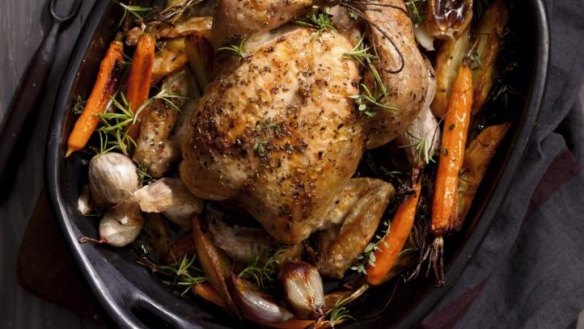
You've got to be able to roast a chicken
You could go through life without knowing how to roast a chicken, but would you want to? There's never a time when it's the wrong meal. My mother always used to put a lot of butter on hers, whereas I use olive oil. But I change it. That's the thing about chicken – you can use coconut oil, or spices. I sometimes use ginger, chilli – I've even been known to use tequila and lime.
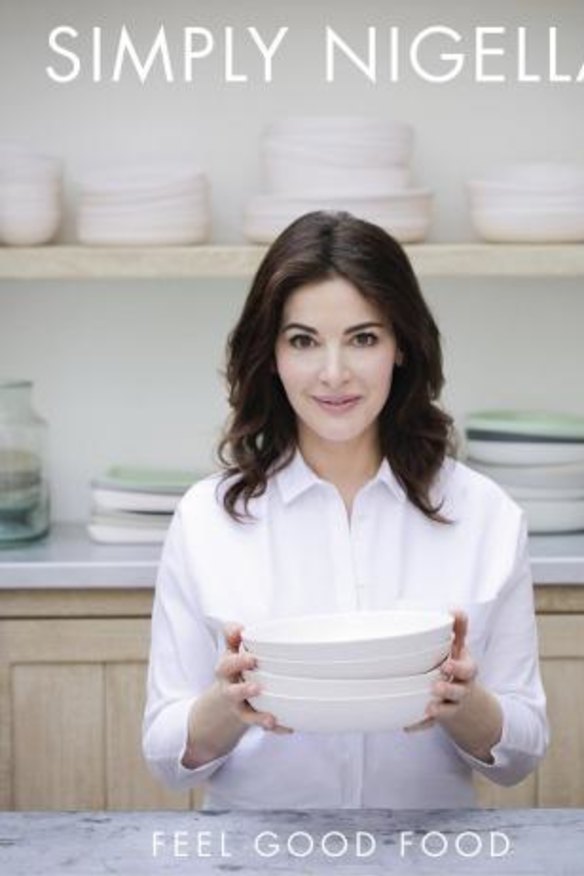
Juicy roast chicken tips
Lemon: I love lemon with chicken. Squeeze lemon all over it and put a lemon inside it, and try different herbs.
Resting: I don't want to give people (particularly in a hot climate) food poisoning but I think a chicken roasts much better if you let it get to room temperature before you cook it. If it goes in really cold, then in order to cook the middle you've overcooked the breast meat.
Oven temperature: Different things work for different people but I go for quite a hot oven – 220C (not fan-forced). Let it stand for a while when it comes out so it doesn't continue cooking in the residual heat. Make sure it cooks through first, and test it and make sure the liquid is running through from the breast to the thigh.
Go organic: You're always going to do better if you can get a good organic chicken. I know it's a lot more expensive but the chances are it won't be as stringy and you'll get a lot more flavour from it. At least you can use the bones for a rich stock, make soup and get another meal out of it.
A basic, (un)photogenic stew
The sort of cooking that is popular now is food that looks great when it's photographed. But actually, at home you really like food that tastes good, and a stew is that. It also makes life easier because the thing about a stew is you cook it in advance, it's very easy to cook – in a slow oven or in a slow-cooker – and then you just heat it up when you need it because, after all, a stew is always better that way.
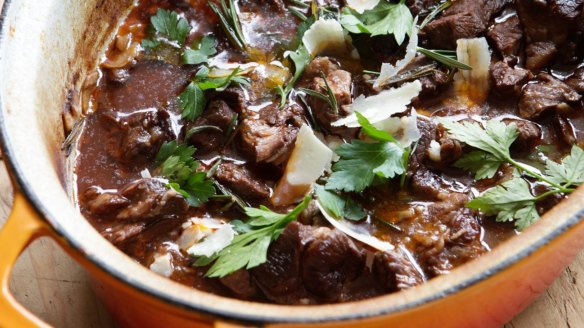
Stew tips
Throw away the recipe: The other great thing about a stew is you learn to cook it without a recipe. It's a question of just understanding the wonderful flavours you can get in there when you cook meat slowly.
Pick the right cut: You're always better off with a fattier cut of meat. Lamb shoulder and lamb neck is better than leg in a stew if I'm using lamb. And shin of beef has so much flavour.
Cut the fat: Because stew is best cooked in advance it's so easy to remove the fat – you wait for it to get cold and the fat rises to the top. You get all that succulence and flavour from the meat but you don't get a greasy liquid.
A quick, fresh curry
I love spice. I think that's something the British and Australians have in common. We both love spicy food, and curries are very important in my life.
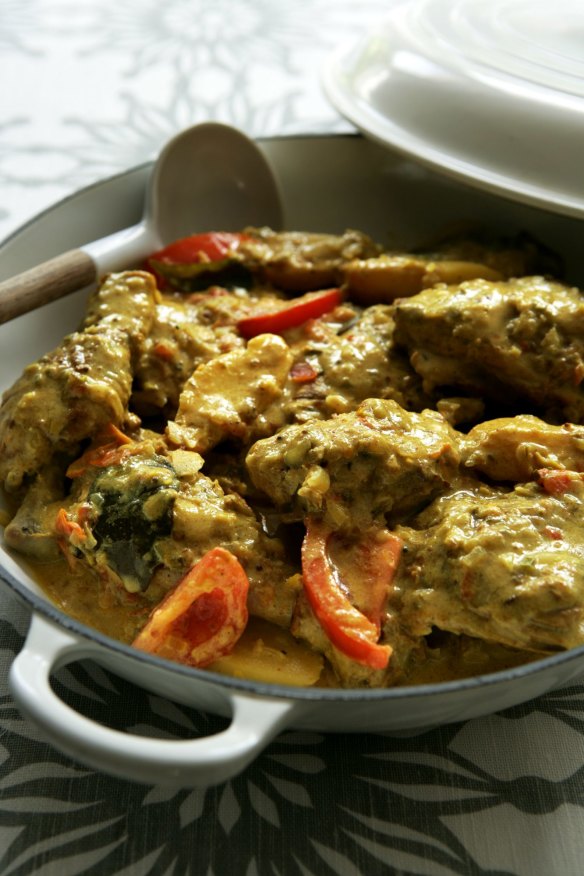
Curry tips
Go Thai: I've become more and more fond of cooking Thai curries in recent years because you can cook them when you don't have much time. What you're going for in a Thai curry is that wonderful freshness of flavour.
And cheat: I was very inspired by a trip to Thailand where I could source good coconut milk, limes, chillies and dried shrimp at the markets. But ... If I can get a good proper Thai curry paste I don't feel as though I have to make my own. And as my Thai friend says, "nor do we!"
Favourite recipe: The curry I get asked to do most often at home is beef massaman curry. The massaman curry shouldn't be that hot, certainly not scorching. But I love chilli. I make a chilli sauce – I make it non-stop – and add it to nearly everything I eat. Myself? I'm very fond of a green curry.
- Bill Granger's beef massaman curry
- Neil Perry's green chicken curry
- Bill Granger's chicken curry (pictured above)
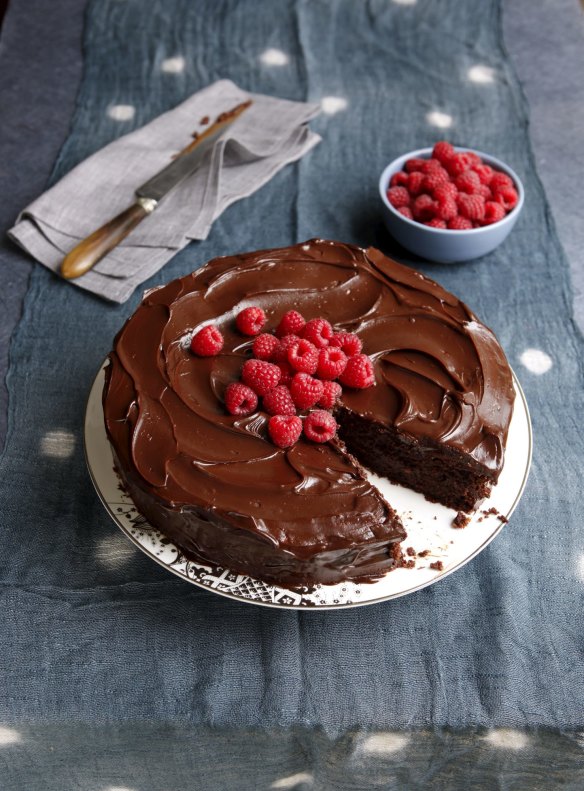
A good chocolate cake
You must have one of these up your sleeve for birthdays and other celebratory occasions. I am constantly trying out new chocolate cake recipes. At the moment I am full of enthusiasm for a vegan chocolate cake. I did it for a friend and it's so simple and so good.
When I gave it a name in Simply Nigella I didn't call it a vegan cake because I thought a lot of people would think it not-worthy. So I call it a "dark and sumptuous chocolate cake". It's one of those really easy recipes – wet ingredients into dry – and there it is. I've used coconut oil in the cake and coconut butter in the icing but you could use vegetable oil or any vegan margarine in the icing. If you're not vegan, you could just use butter. It wouldn't matter.
Chocolate cake tips
Master one recipe, then mix it up: I might use a bit of instant espresso powder in a chocolate cake to keep it really bitter. Or I might put in some vanilla, or I might put some mint in. Once you understand how you make your cake, then you can start playing around with it. So you see, there's no need to be doing all sorts of cakes
Stephanie's pavlova
Outside Australia and New Zealand (and let's not get into that debate) I'd say the pavlova is best known in Britain. They are just so delicious. I can't understand why they're not just made everywhere. I think I've got a pavlova in every book I've written, so I've certainly done my part!
Variations: I've done a chocolate raspberry pavlova by adding cocoa into the base. I've done what I call my cappuccino pav; it has a coffee-flavoured base, then softly whipped cream, and then, like a cappuccino I dust the top with a bit of bitter cocoa. More recently I've tried a version with lemon zest and lemon curd, so it's a bit like a lemon meringue pavlova.
Inspiration: I get my pavlova (method) from Stephanie Alexander's famous version in The Cook's Companion. Yes, I've fiddled with it over the years, but absolutely stuck to her technique. The key is turning over the base after you've baked it so that lovely marshmallow underside meets the cream and sort of melts. That is such a great tip. For me Stephanie Alexander's pavlova is the starting point and the return point, because passionfruit is just the best fruit to use in a pavlova. I do play around, but that is just perfection.
As told to Jane Holroyd
The best recipes from Australia's leading chefs straight to your inbox.
Sign up